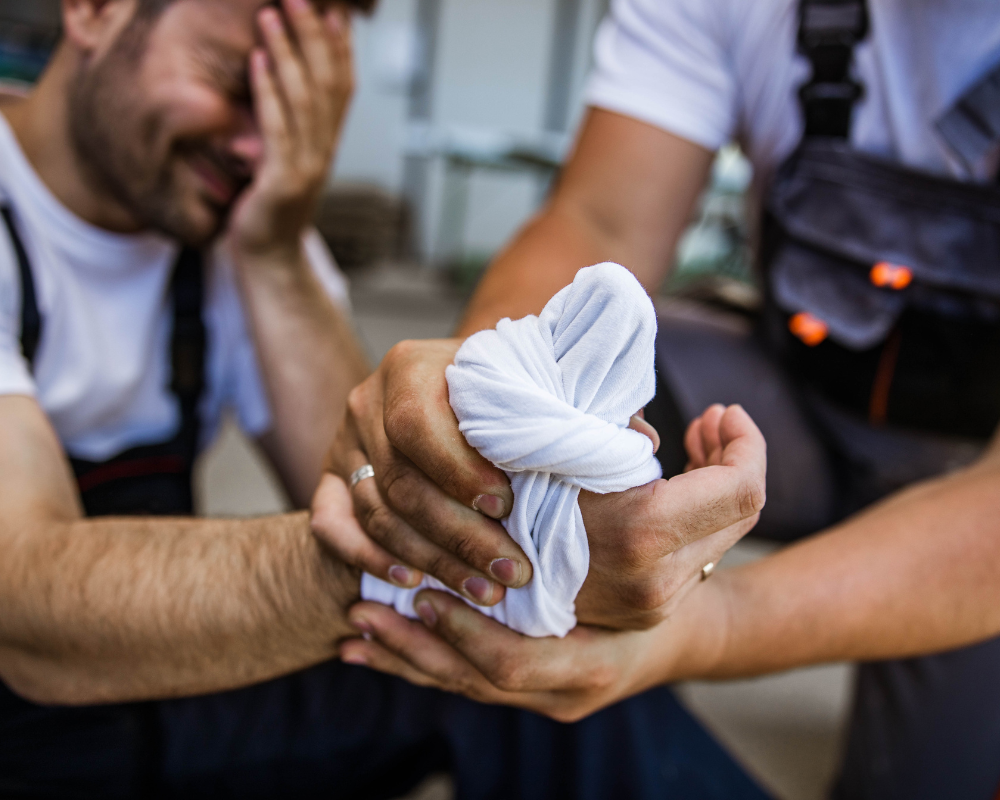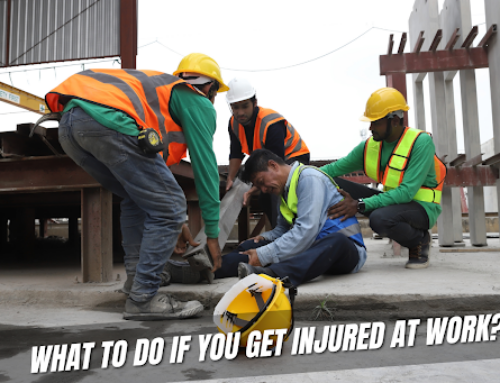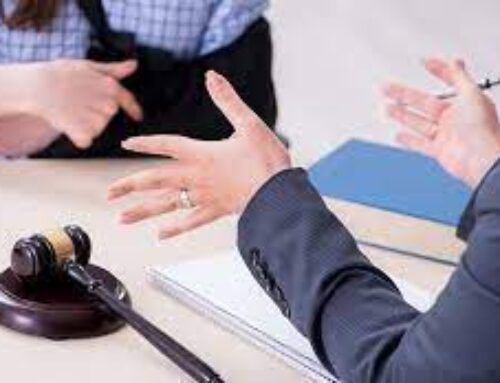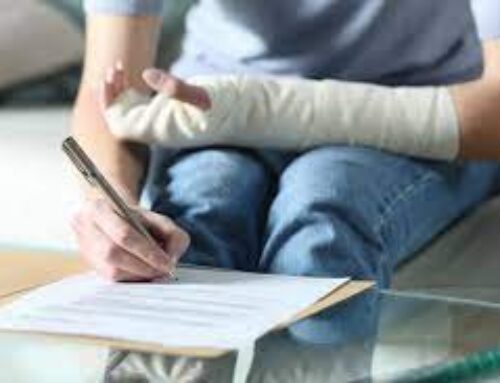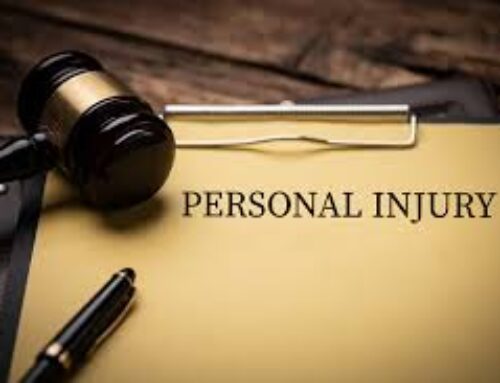Slip and fall accidents can happen anywhere, at any time, and to anyone. Slip and fall accidents often result in serious injuries for victims, leading to medical costs, lost wages, and ongoing physical pain and emotional stress. Filing a slip-and-fall lawsuit is one way for injured parties to reclaim damages through legal representation; we will explore all key elements involved here, including insights from an experienced personal injury lawyer about this legal action as a means of seeking justice through compensation claims for them.
What is a slip-and-fall lawsuit?
A slip and fall lawsuit is a type of personal injury claim or case based on an injured person from slipping (or tripping) and falling. Claiming against property owners who may have neglected to address an unsafe condition of their premises constitutes negligence claims. Here’s a deeper look:
Definition and Scope: A slip and fall lawsuit involves an individual getting injured on someone else’s property due to unsafe conditions, such as wet floors, icy paths, or uneven carpeting.
Liability: Typically, property owners are liable if it is proven that they knew about the dangerous condition or should have known about it and did nothing to rectify it.
Recognizing Common Causes of Slip and Fall Accidents
Identifying what frequently causes these accidents can help establish if a property owner may be liable for negligence. Here are some specific scenarios:
Wet and Uneven Surfaces: This includes spills, wet floors in a supermarket, freshly waxed or mopped floors without warning signs, or broken sidewalks.
Obstacles and Clutter: For instance, power cords across walkways, open drawers, or stacked items in store aisles can trip customers.
Determining Liability in Slip and Fall Case
Under this type of personal injury lawsuit, it falls on the injured party to prove negligence on the part of any liable parties or property owners. Consider these key aspects:
Property Owner’s Duty of Care: Property owners must maintain a reasonably safe environment for visitors. Failing to do so, such as failing to remove hazards, could constitute negligence.
Breach of Duty: If it is proven that the property owner knew about the dangerous condition and did not act to remove or repair it, this can be seen as a breach of duty.
The Role of a Personal Injury Lawyer in Slip and Fall Lawsuits
Having the right legal representation can significantly influence the outcome of your slip-and-fall claim. Personal injury lawyers provide several indispensable services:
Provide Legal Advice: A personal injury attorney explains how the law applies to your case and outlines the best course of action.
Gather Evidence: This includes obtaining surveillance footage, photographic evidence of the scene, and maintenance records of the property.
Steps to Take Immediately After a Slip and Fall Accident
After experiencing a slip and fall accident, taking the right steps immediately and in the days following is crucial for your health and any potential legal liability insurance claim. Here’s a detailed guide on how to proceed effectively.
Immediate Actions
Right after a slip and fall accident, your priority should be to address any injuries and report the incident.
Seeking Medical Attention
Immediate Health Concerns: Even if injuries seem minor, underlying issues, such as internal bleeding or concussions, can go unnoticed initially. Immediate medical care and assessment are crucial.
Documentation for Legal Use: Medical records immediately following the accident are vital evidence in a slip and fall lawsuit. They link your injuries directly to the incident.
Reporting the Incident to the Property Owner or Manager
Formal Notification: Inform the property owner, manager, or responsible party responsible about the incident as soon as possible. This notification should be documented, ideally in writing.
Accident Report: If the incident occurs in a business setting, such as a store or an office building, ensure an official accident report is filled out and request a copy for your records.
Documenting the Scene
Collecting sufficient evidence from the accident scene is critical to support your claim. This includes visual documentation and witness accounts.
Taking Photographs and Videos
Capture the Condition: Take clear photos and videos of the accident scene, focusing on specific hazards that caused the fall, such as icy patches, uneven flooring, or spilled liquids.
Contextual Evidence: Include a variety of angles and distances in your photos to provide a comprehensive view of the environment and the hazard’s location.
Collecting Witness Statements
Immediate Witnesses: If there were any witnesses to your fall, ask for their contact information. Witness accounts can provide an independent perspective on the accident.
Record Statements: Encourage witnesses to describe what they saw in detail, and if possible, have them write it down or record a statement using a smartphone.
Preserving Evidence
Maintaining all evidence related to your fall claims and injuries is essential for substantiating your claim in a slip and fall lawsuit.
Keeping Medical Records and Bills
Complete Records: Keep all medical records and bills related to the treatment of your injuries. Medical expenses cover hospital stays, doctor consultations, physical therapy sessions, and any additional related expenditures.
Ongoing Treatment Documentation: Continue to document any follow-up treatments and evaluations to show the extent and duration of your injuries.
Retaining Clothing and Footwear Worn During the Accident
Condition of Clothing and Footwear: Keep the clothes and shoes you were wearing at the time of the accident. Examining such items will demonstrate their non-contributory nature to the fall.
Professional Analysis: In some cases, these items might be analyzed by experts to determine aspects like the sole’s traction or the presence of any substances that could have caused slipping.
How to Prove Negligence in a Slip and Fall Lawsuit
Proving negligence is crucial in slip-and-fall cases. This process often involves:
Evidence Collection: Gathering everything from accident scene photos to clothing and footwear you wore during the accident.
Witness Statements: If anyone saw you fall, their accounts could be pivotal in proving your case.
Understanding Comparative Fault in Slip and Fall Cases
This legal concept can reduce your compensation if you’re found partly at fault for your accident:
Definition of Comparative Fault: This rule reduces your compensation by your percentage of fault in the accident.
Impact on Your Claim: If found 20% at fault, your compensation will be reduced by 20%.
The Importance of Medical Documentation in Slip and Fall Lawsuits
Medical records not only support your claim of injury but also link it directly to the accident:
Types of Documentation Needed: Includes doctor’s reports, X-rays, MRIs, and receipts for medical treatment expenses.
Linking Injuries to the Accident: It’s crucial to have medical professionals document that your injuries are consistent with a fall and related directly to your accident.
Potential Compensation in Slip and Fall Lawsuits
The compensation you might be eligible for can cover a range of damages:
Medical Expenses: Reimbursement for all medical treatments related to your injuries, both immediate and future.
Lost Wages and Earning Capacity: If you’re unable to work temporarily or permanently, you can claim compensation for lost wages and the loss of earning capacity.
Negotiating with Insurance Companies
Negotiating with the insurance company after a slip and fall accident can be daunting. Understanding their tactics and preparing adequately can significantly influence the outcome of your settlement. Here’s how to approach these negotiations effectively.
Understanding Insurance Tactics
Insurance companies operate to generate profits, creating strong incentives to minimize payouts on claims as efficiently as possible. Below are some strategies they employ:
Common Strategies Used by Insurers to Minimize Payouts
Initial Low Offers: Insurers often start with a low settlement offer, hoping you will accept it quickly, especially if you are in a vulnerable financial position.
Disputing Liability: They may question your account of the incident or argue that you were at fault or contributed to the accident.
Delaying Tactics: Delaying the process can pressure you into accepting a lower settlement due to financial strain.
Importance of a Lawyer in Negotiations
Expertise and Experience: A personal injury lawyer understands the tactics used by insurance companies’ trial lawyers and can counteract them effectively.
Advocacy: Your lawyer acts as your advocate, handling communications and negotiations to ensure your rights are protected and you receive a full, fair compensation and settlement.
Preparing for Settlement Talks
Being well-prepared is crucial when entering settlement negotiations with an insurance claims company.
Presenting a Strong Case to the Insurer
Organized Documentation: Present a well-organized case with all relevant documents, including medical records, accident reports, and evidence of lost wages, as suggested by the structured demand letter approach.
Clear Argument: Outline clearly how the accident occurred, the property owner’s negligence, and the full extent of your injuries and financial losses.
Strategies for Effective Negotiation
Know Your Claim’s Value: Understand the full value of your claim, including all economic and non-economic damages, to avoid accepting a low offer.
Be Prepared to Explain: Be ready to discuss the details of your case thoroughly and why you deserve the amount you are asking for.
When to Accept a Settlement
Deciding when to accept a settlement offer is critical and can depend on many factors.
Evaluating the Fairness of a Settlement Offer
Comprehensive Coverage: Ensure the offer covers all your current and future medical expenses and lost wages, as well as compensates for pain and suffering.
Comparison With Precedents: Compare the offer with settlements or awards in similar cases to gauge its fairness.
Pros and Cons of Settling Versus Going to Trial
Pros of Settling: Less stress and uncertainty, lower legal fees and costs, and quicker resolution.
Cons of Settling: Potentially lower compensation for attorney’s fees than what might be awarded at trial, especially if your case is strong.
Deciding regarding whether to settle or proceed to trial should be made after seeking advice from your personal injury attorney. An experienced legal representative can offer valuable insight based on his or her knowledge and the specifics of your case while keeping in mind each negotiation is different and should aim at optimizing compensation while minimizing risks; most personal injury claims tend not to go to trial.
Going to Trial
If settlement negotiations do not result in a satisfactory offer, going to trial may be the next step in your slip-and-fall lawsuit. Knowledge is power: it helps prepare for what lies ahead during trial proceedings and can ease anxiety over what lies in store for you.
Trial Preparation
Preparing for trial involves several steps, from filing legal paperwork and collecting evidence to devising strategies on how to present your case before the judge.
Filing a Lawsuit and Legal Procedures
Filing a Complaint: Your lawyer will file a complaint against the defendant(s), detailing the allegations of negligence and the damages sought.
Responses and Pleadings: The defendant will file an answer, possibly including defenses and counterclaims.
Pre-trial Motions and Hearings
Motions: These might include motions to dismiss the case, motions for summary judgment, or motions to exclude certain evidence.
Hearings: Pre-trial hearings help the judge manage the flow of the upcoming trial and determine what evidence and testimonies will be allowed.
Courtroom Proceedings
The trial itself is an official legal procedure where both sides present their cases before either a judge or jury for consideration and decision-making.
Jury Selection and Trial Timeline
Jury Selection: A process called voir dire is used to select jurors who are unbiased and will serve on the jury panel.
Trial Timeline: Trials can last from a few days to several weeks, depending on the complexity of the case.
Presenting Evidence and Witness Testimony
Opening Statements: Both sides present an overview of their case and what they hope to prove.
Evidence Presentation: Physical evidence, witness testimonies, and expert testimonies are presented to establish the facts of the case.
Closing Arguments: Each side summarizes their case, trying to persuade the jury to favor their position.
Verdict and Post-Trial Actions
Once the trial has concluded, either a jury (or, in bench trials, the judge) will deliberate before reaching their verdict.
Understanding the Judgment
Jury Deliberation: The jury considers the evidence and legal instructions to reach a verdict.
Verdict: The decision on whether the defendant is liable and, if so, the amount of damages awarded.
Post-trial Motions and Appeals
Post-Trial Motions: These can include motions for a new trial or motions to alter or amend the judgment.
Appeals: If one party is dissatisfied with the verdict or believes there were legal errors, they can appeal to a higher court.
The Timeline of a Slip and Fall Lawsuit
Understanding how long a lawsuit might take can help manage expectations:
Initial Consultation to Settlement: The legal process usually starts with a free consultation, followed by filing a lawsuit, discovery, negotiation, and possibly a trial.
Factors Influencing the Timeline: These Include the complexity of the case, the amount of evidence, and the cooperation level of the opposing party.
Hiring the Right Personal Injury Lawyer
Selecting the right lawyer is paramount to your case’s success. Here’s what to consider:
Experience and Specialization: Look for a lawyer specializing in slip and fall or personal injury law with a proven track record.
Client Testimonials and Case Results: Reviews and case outcomes often shed light on the effectiveness of a lawyer.
Going through a slip-and-fall case may seem complicated. With proper legal expertise and assistance from an experienced personal injury attorney by your side, it should not be impossible for you to pursue compensation that rightfully belongs to you. Every case differs; therefore, legal advice from professionals is invaluable. Most personal injury attorneys provide their services on a contingency fee basis where no payment is incurred until their client wins their case; so if someone close to you has been hurt in a slip and fall accident, consider consulting one right away so as to explore all available legal avenues as soon as possible.
Secure Your Rights with Expert Legal Representation at the Law Office of Frank A. Cetero
If you’re dealing with the aftermath of a slip and fall incident in Long Island and need legal assistance to recover compensation, consider reaching out to Lawisland, the Law firm of Frank A. Cetero. Our firm’s attorneys understand the difficulties involved with auto and workplace-related accidents can be stressful; that’s why our legal team works to safeguard your rights and secure compensation if injuries were due to someone else’s careless actions. Don’t suffer financially as a result; call now for your consultation appointment so that our firm can develop a plan and secure you the settlement to which you are entitled!

